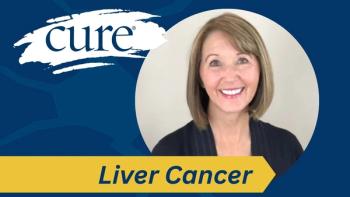
Copiktra Plus Chemotherapy Needs Further Study of Toxicities in Patients With CLL
An early phase 1b/2 study of Copiktra in combination of standard of care shows how the treatment is active for patients with chronic lymphocytic leukemia but further study is needed to ensure it is an effective and safe alternative to standard of care.
To address younger patients with chronic lymphocytic leukemia (CLL) relapsing after initial chemoimmunotherapy treatment, researchers looked at the combination of Copiktra (duvelisib) with standard of care fludarabine, cyclophosphamide and rituximab (FCR). While the treatment was active in the frontline setting, it produced results similar to FCR alone.
Initial therapy for with CLL consists of FCR, a standard of care chemoimmunotherapy treatment. However, younger patients (Less than 65 years old) are still likely to relapse after FCR treatment despite its effectiveness in fighting the disease. Moreover, patients with a more aggressive unmutated immunoglobulin heavy chain (IGHV) do not respond well to FCR alone, according to researchers.
In the phase 1b/2 study, when FCR was combined with Copiktra (DFCR), researchers found the three-year progression free survival (survival of patients with no progressions of disease) was 73% with overall survival at 93%. Moreover, bone marrow undetectable minimal residual disease (BM-uMRD), a marker for disease progression, correlated to progression free survivial. Thus, DFCR is an active frontline treatment, but one that has similar outcomes to FCR alone. However, this does not mean the results of the treatment were a wash.
“We hypothesized that combining duvelisib with FCR would mitigate immune-related toxicities in the frontline setting by utilizing chemoimmunotherapy to dampen the immune response,” researchers said when explaining the study, “and would have the potential to induce deep remissions that could translate into a higher rate of long-term treatment-free remission than has been observed historically with FCR, particularly for patients with higher-risk disease.”
Eighty-eight percent of patients on the study responded to treatment, with three patients coming off the study due to toxicities. After three cycles of treatment in the 1b phase of the study, the complete response rate rose from 19% in the first cycle to 25% in the second cycle and 56% in the final cycle. In patients with mutated IGHV they had a similar rise in response rate from 21, 29% and 57% respectively. The phase 2 portion of the trial however did not yield the same results and missed its primary endpoint. The combined rate was only 25% post DCFR treatment.
“Although the rate of patients achieving CR with BM-uMRD after completing DCFR is not significantly higher than 20% rate expected with FCR alone,” the researchers explained. “The rate of Bm-uMRD irrespective of iwCLL response is higher than would be expected with FCR alone at 56% at the end of combination therapy and rises further to 66% as the best response after duvelisib maintenance.”
Of the thirty-two patients enrolled in the study, hematologic (blood-related) toxicities were common and included thrombocytopenia (81%), neutropenia (78%) and lymphopenia (72%) a majority of each were considered grade 3 or higher side effects. The most common side effects were nausea (72%), fatigue (69%) and fever (56%). Immune related side effects included transaminitis, having a high liver enzyme count that is an indicator of liver damage, inflammatory arthritis, colitis and pericarditis and pancreatitis in one patient each.
According to researchers, the immune-related side effects were managed with prolonged holds from treatment and steroid treatment and were mostly expected side effects related to PI3K-inhbitors with the exception of inflammatory arthritis. Moreover, researchers concluded that further study for patients on DFCR could include strategies to shorten the course of FCR to manage these toxicities.
“While the regimen is certainly active, the 3-year PFS of 73% does not appear significantly superior to historical results with FCR alone,” the researchers concluded. Further study is not only needed to manage toxicities but to see if more effective outcomes can be achieved.




